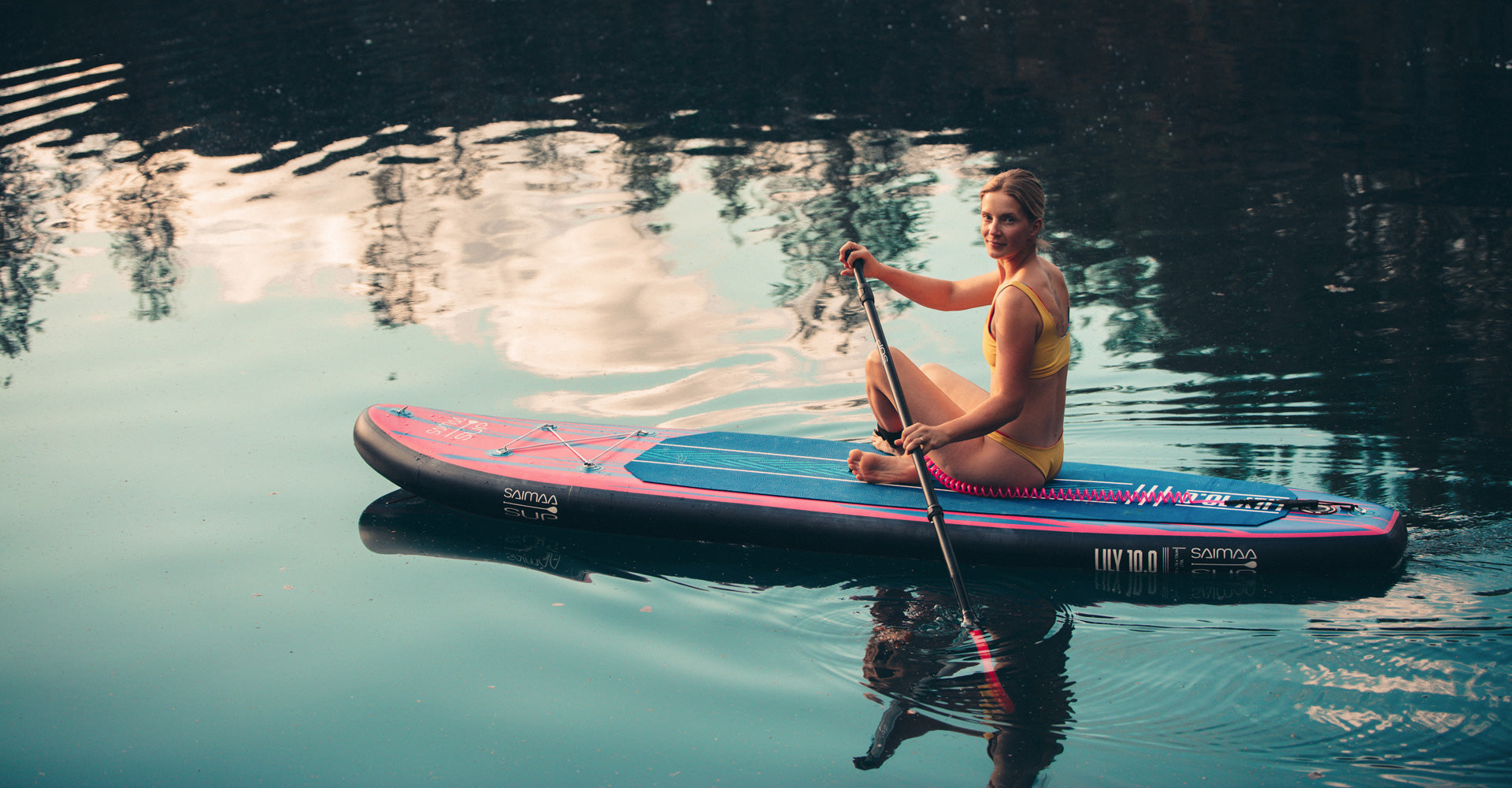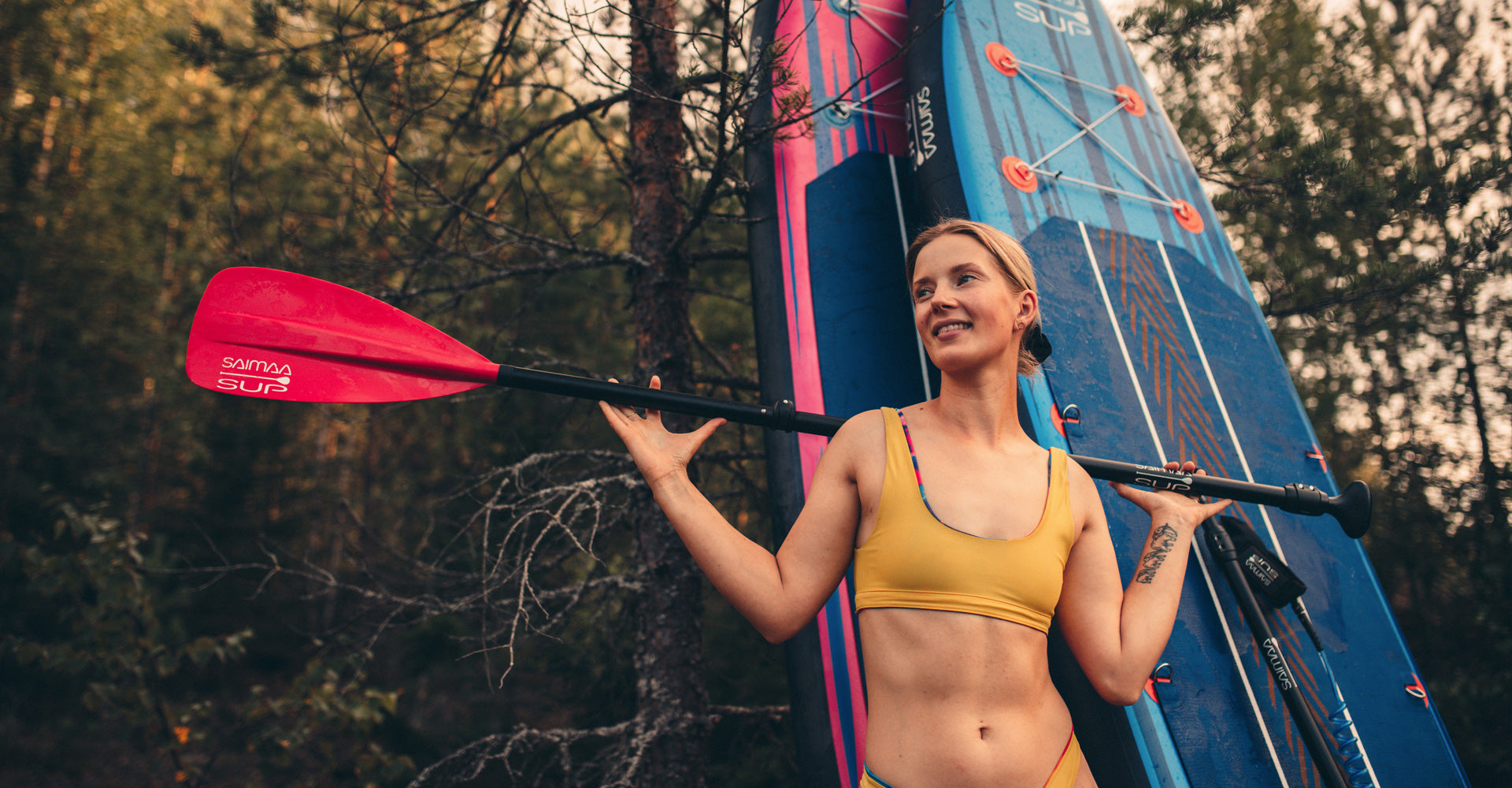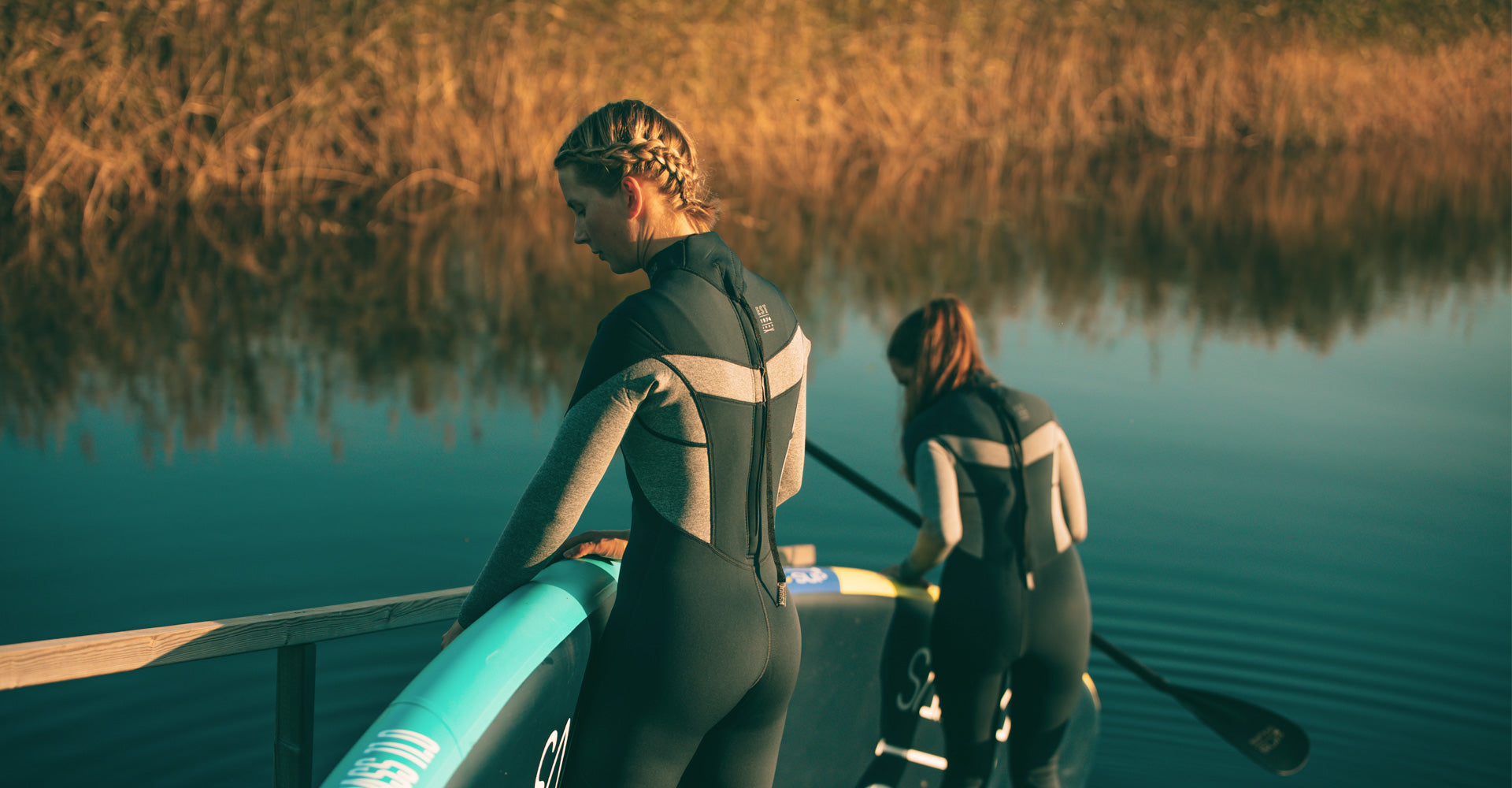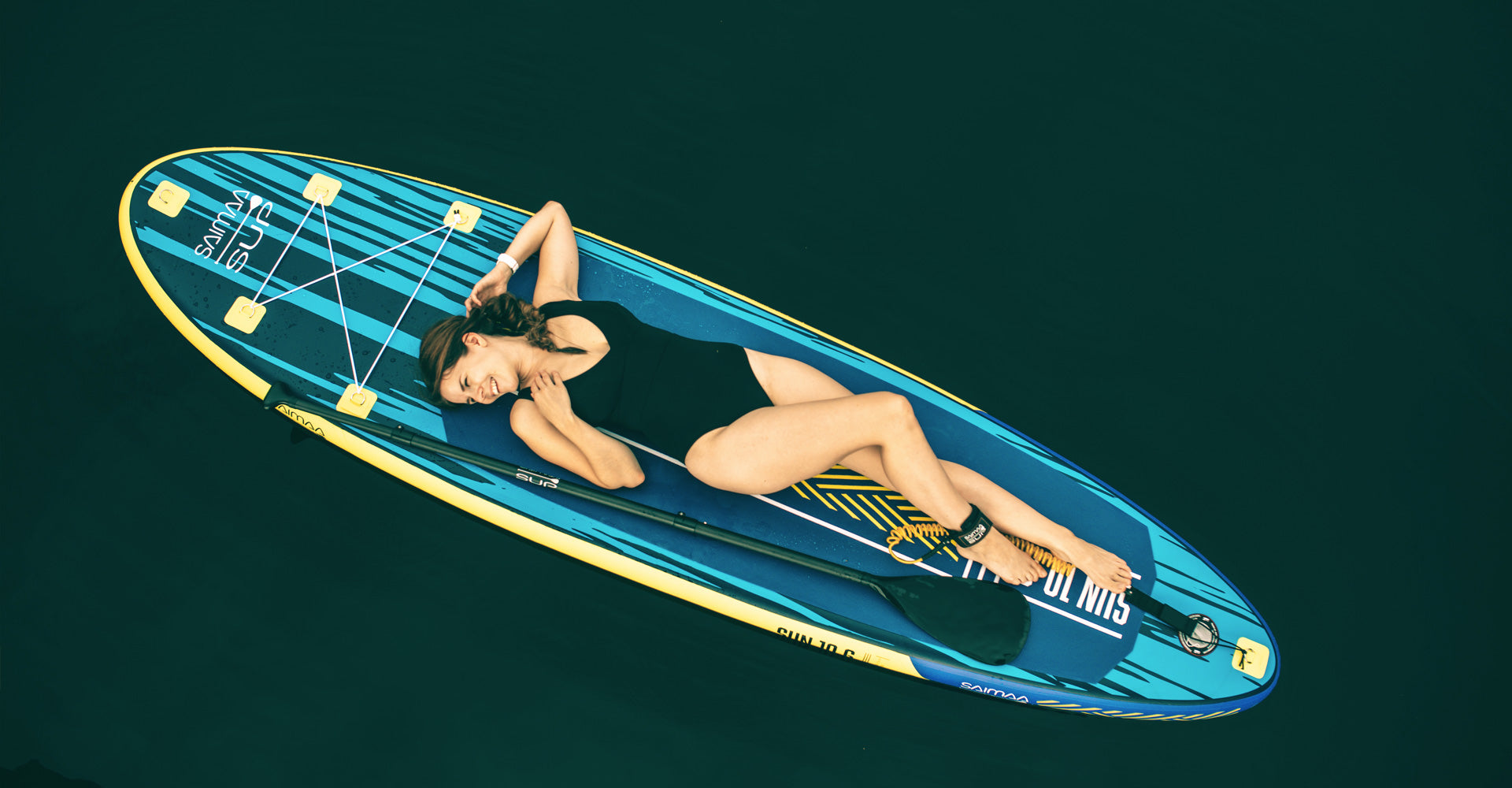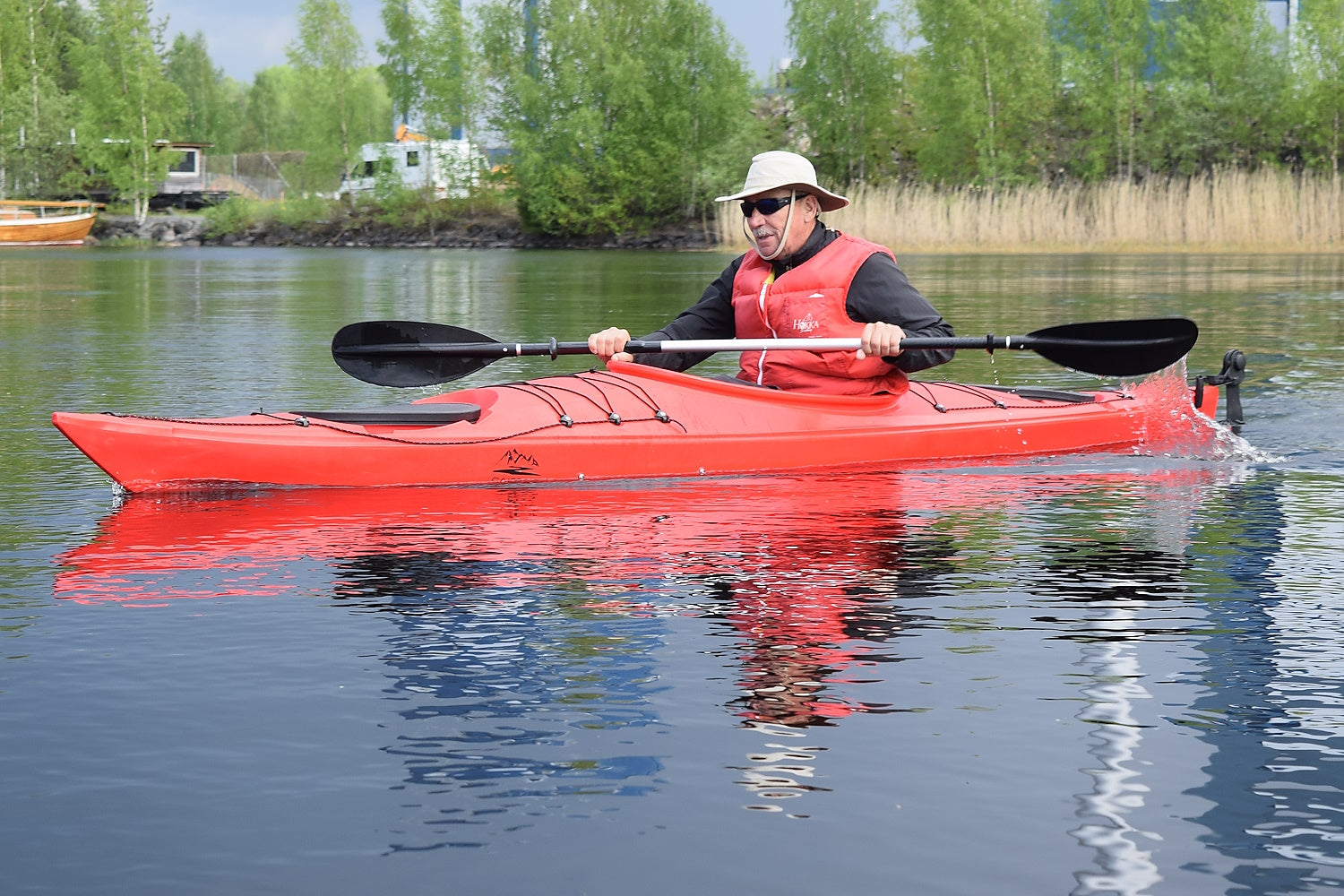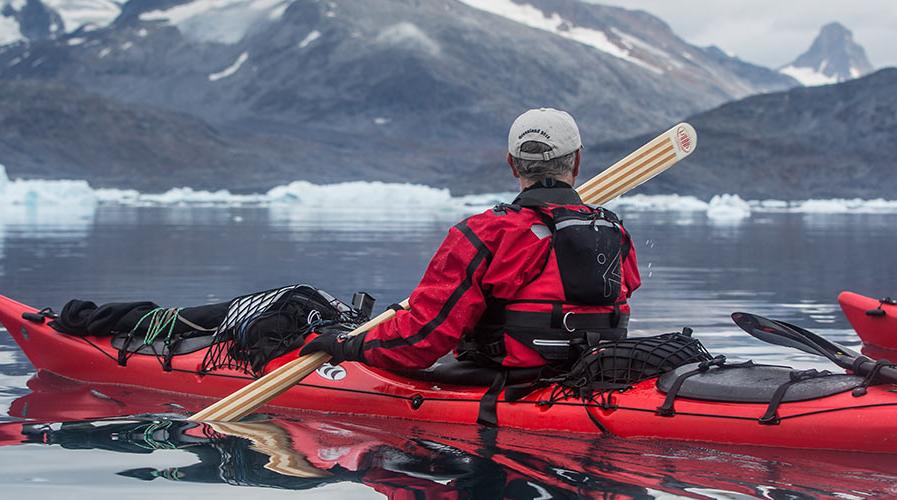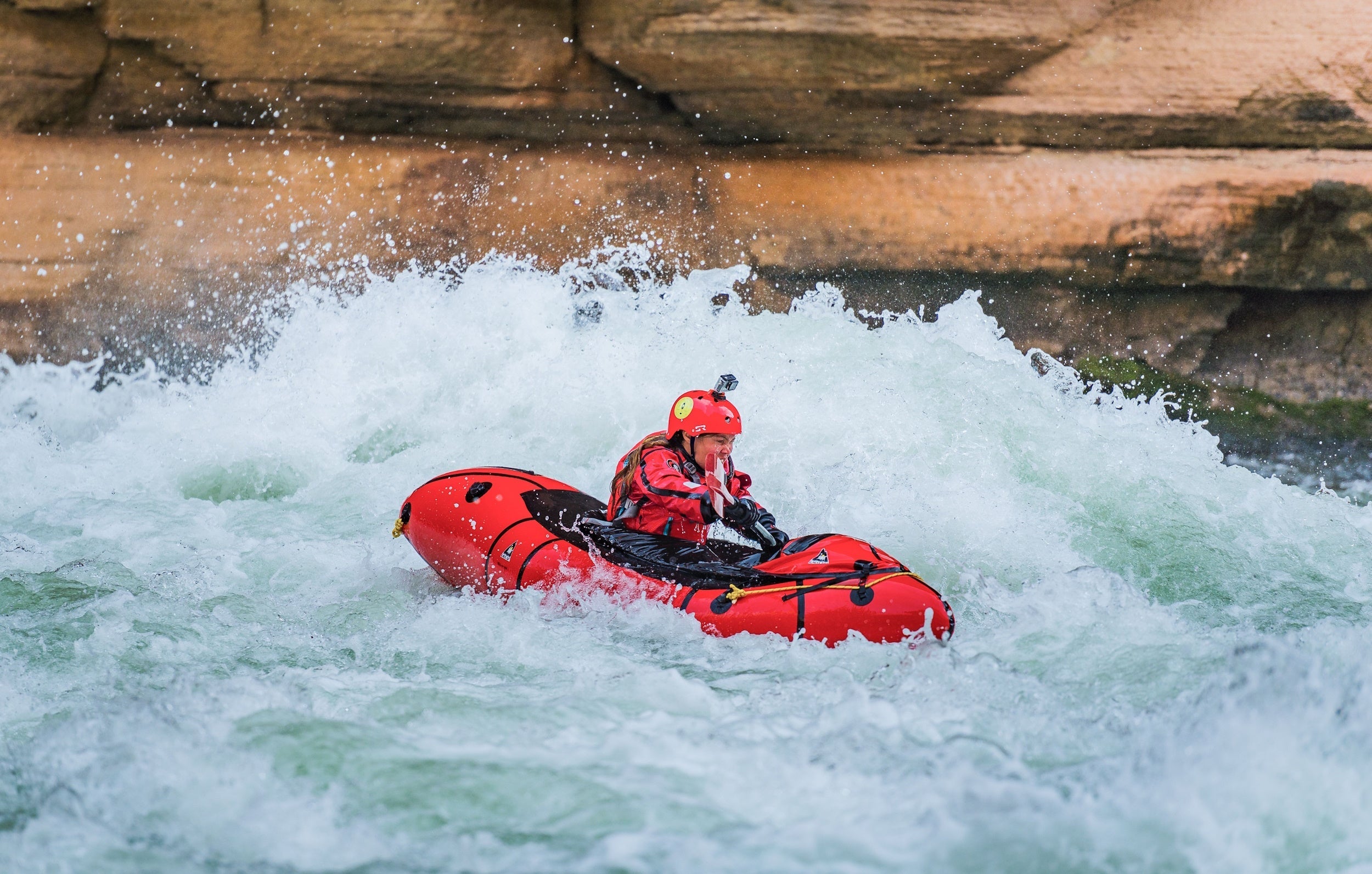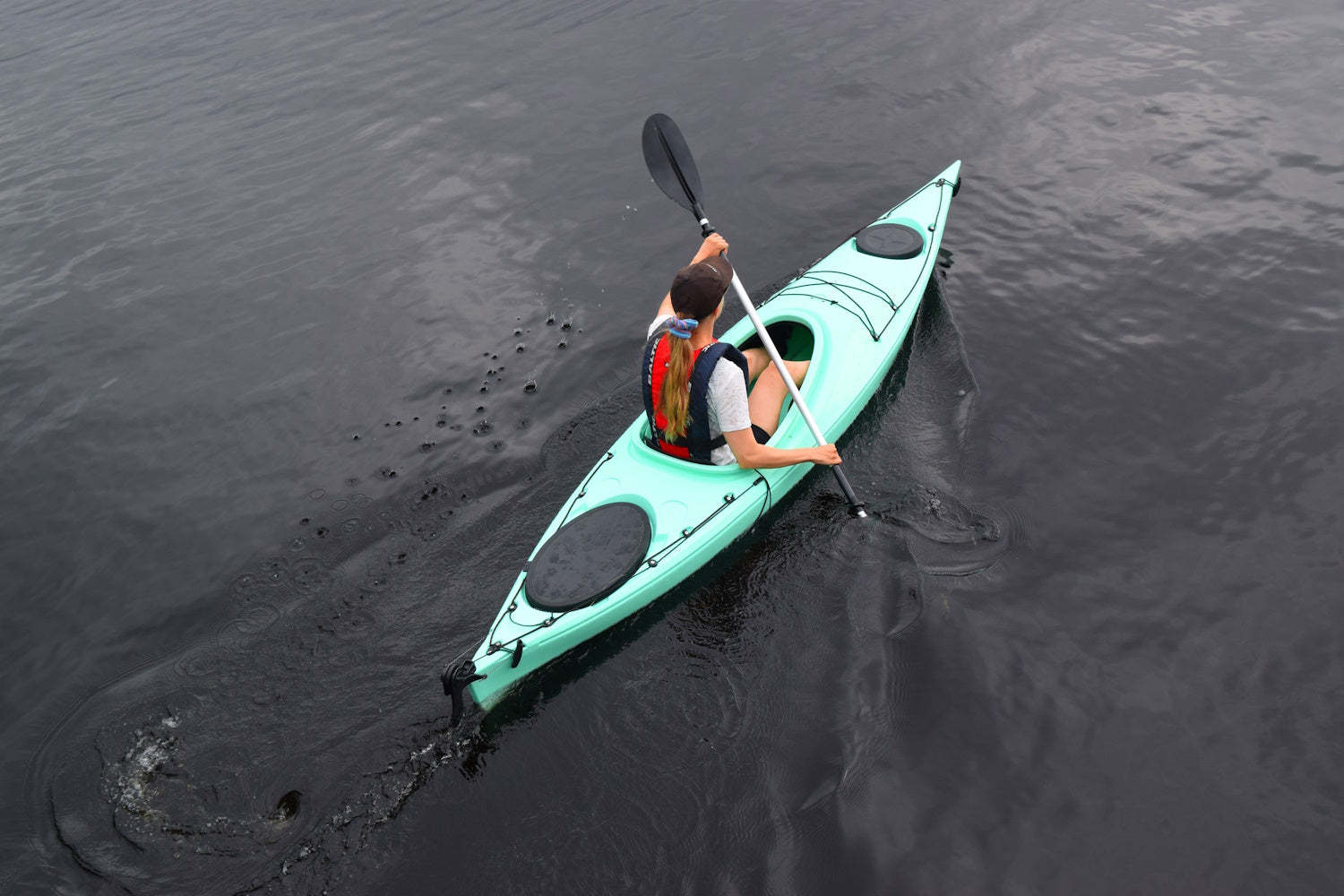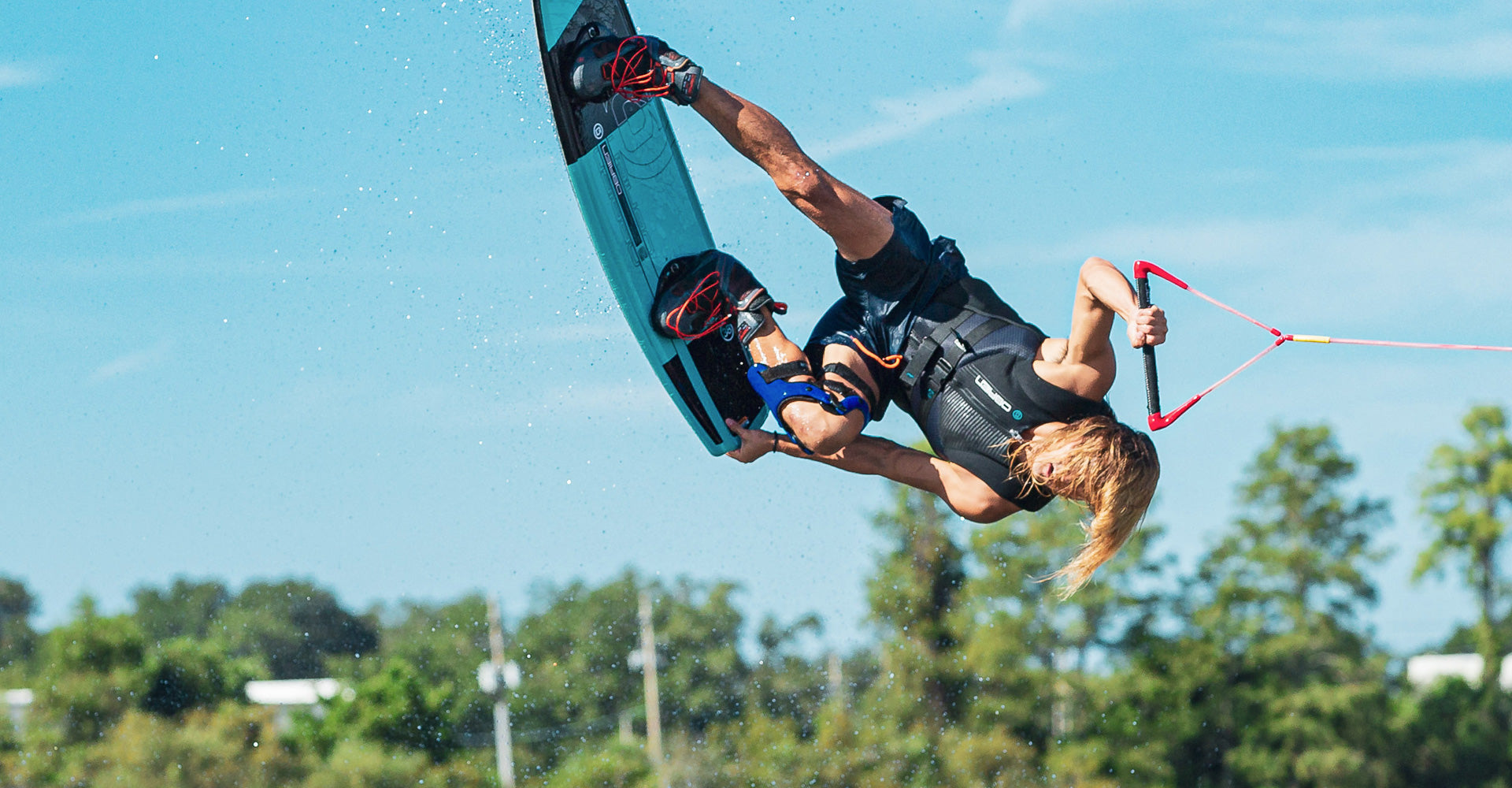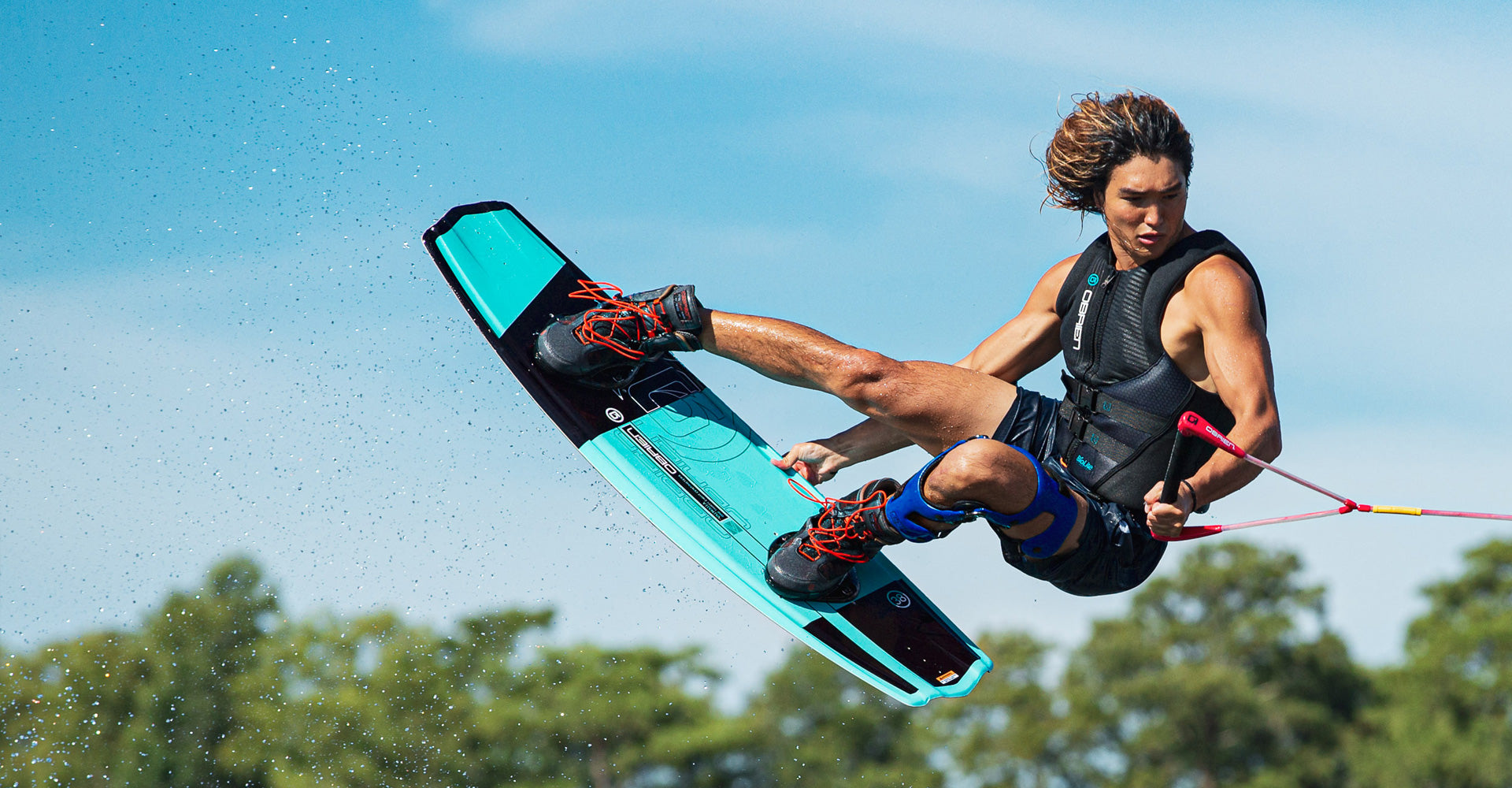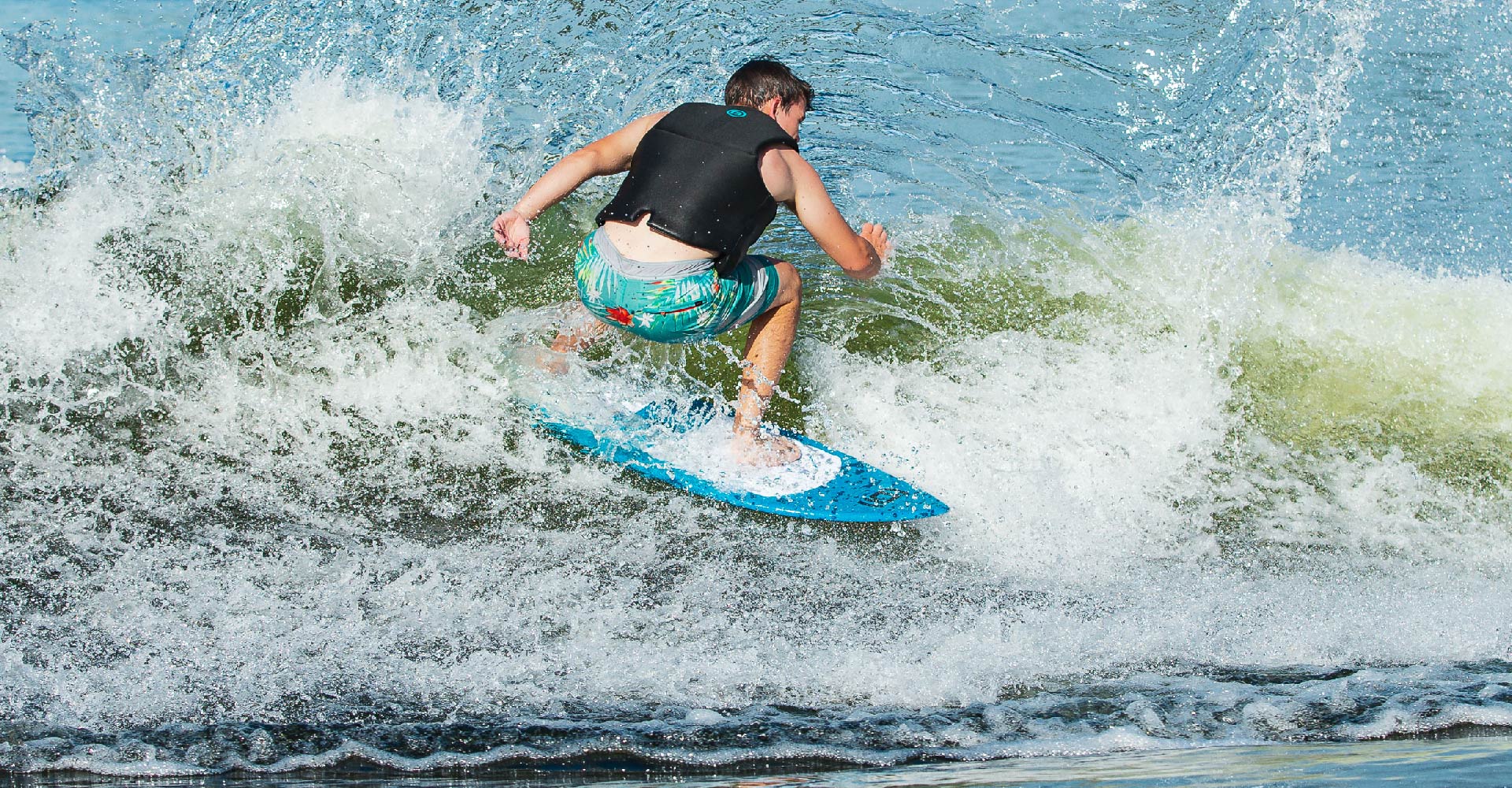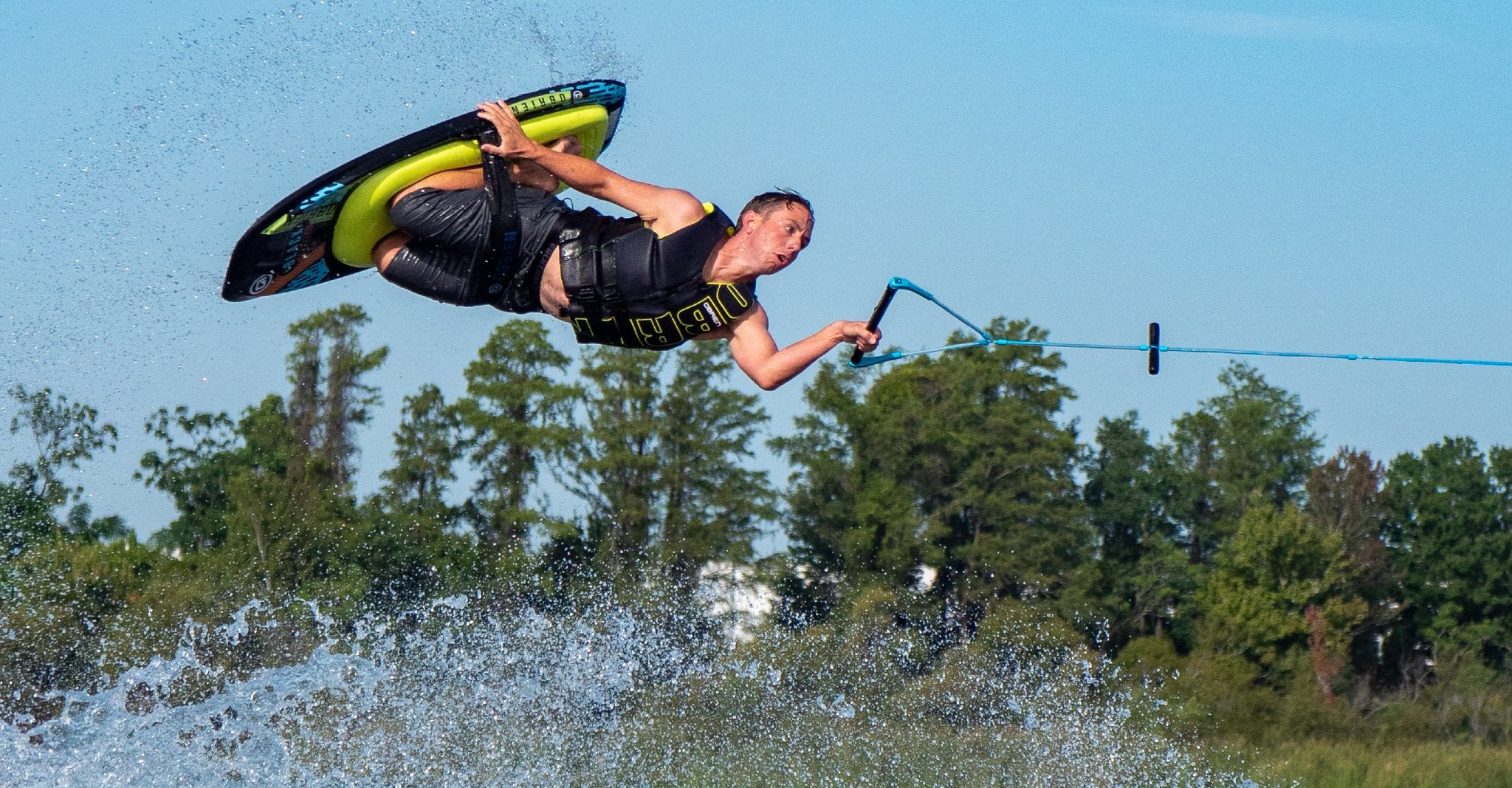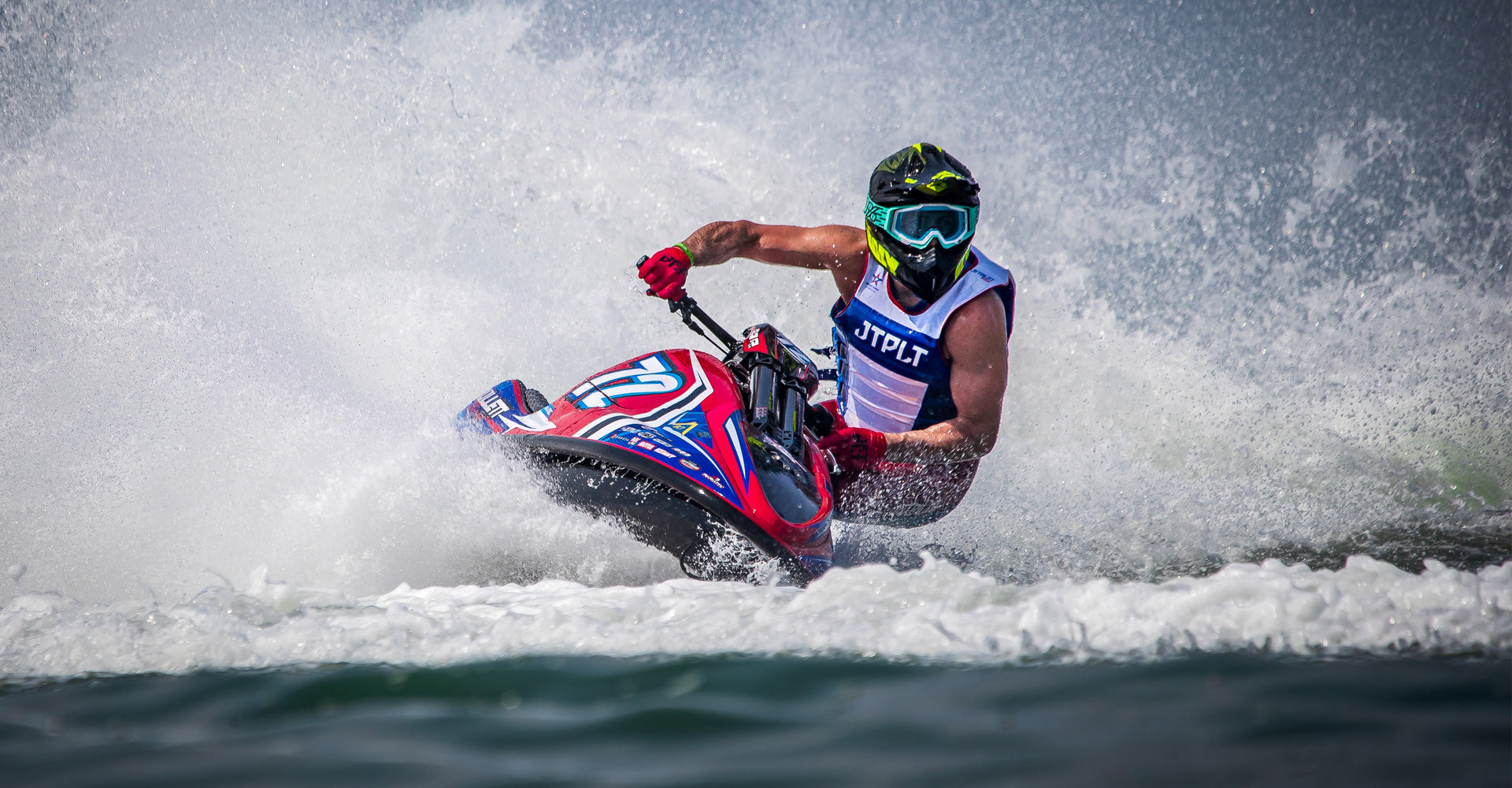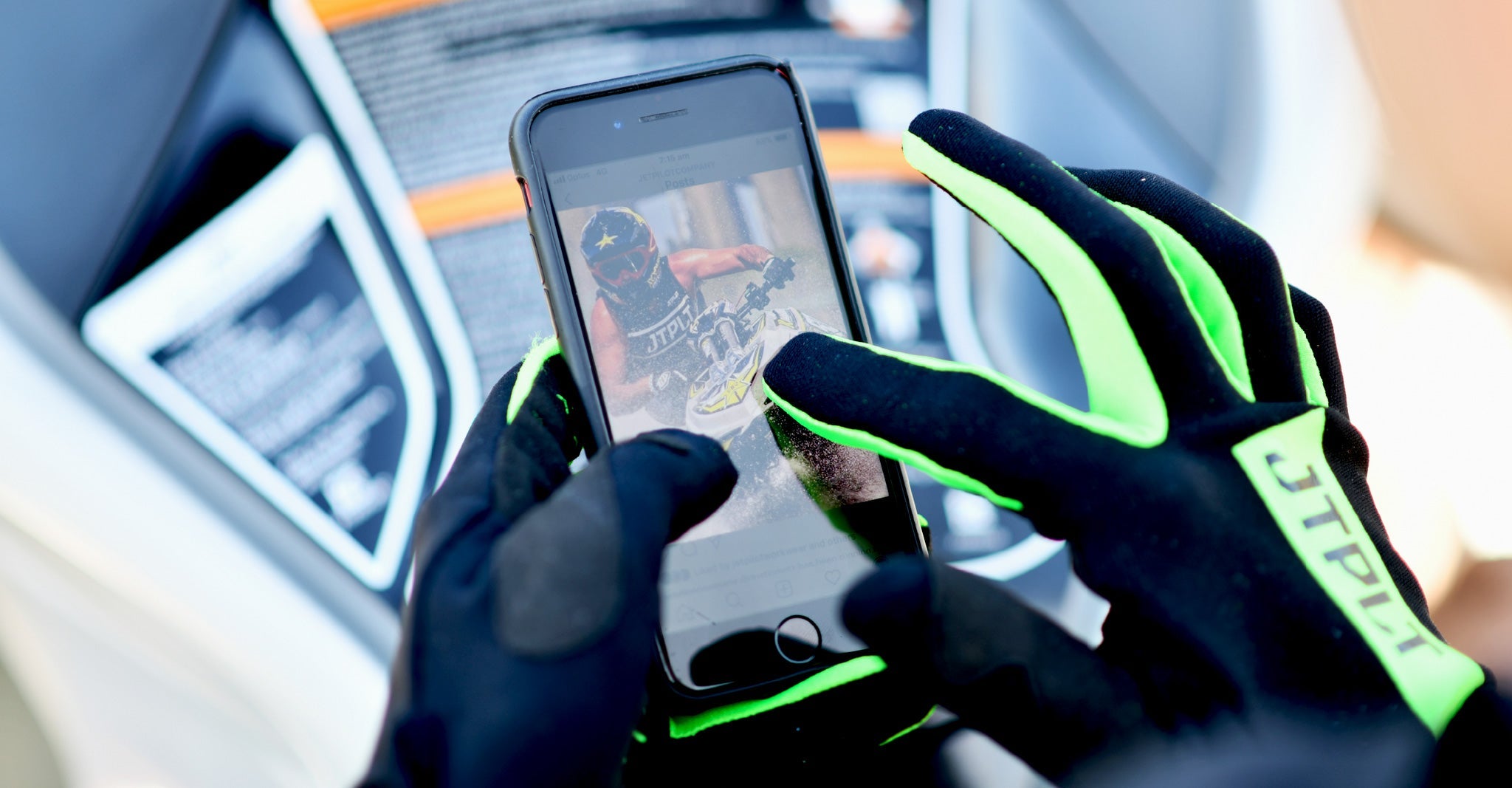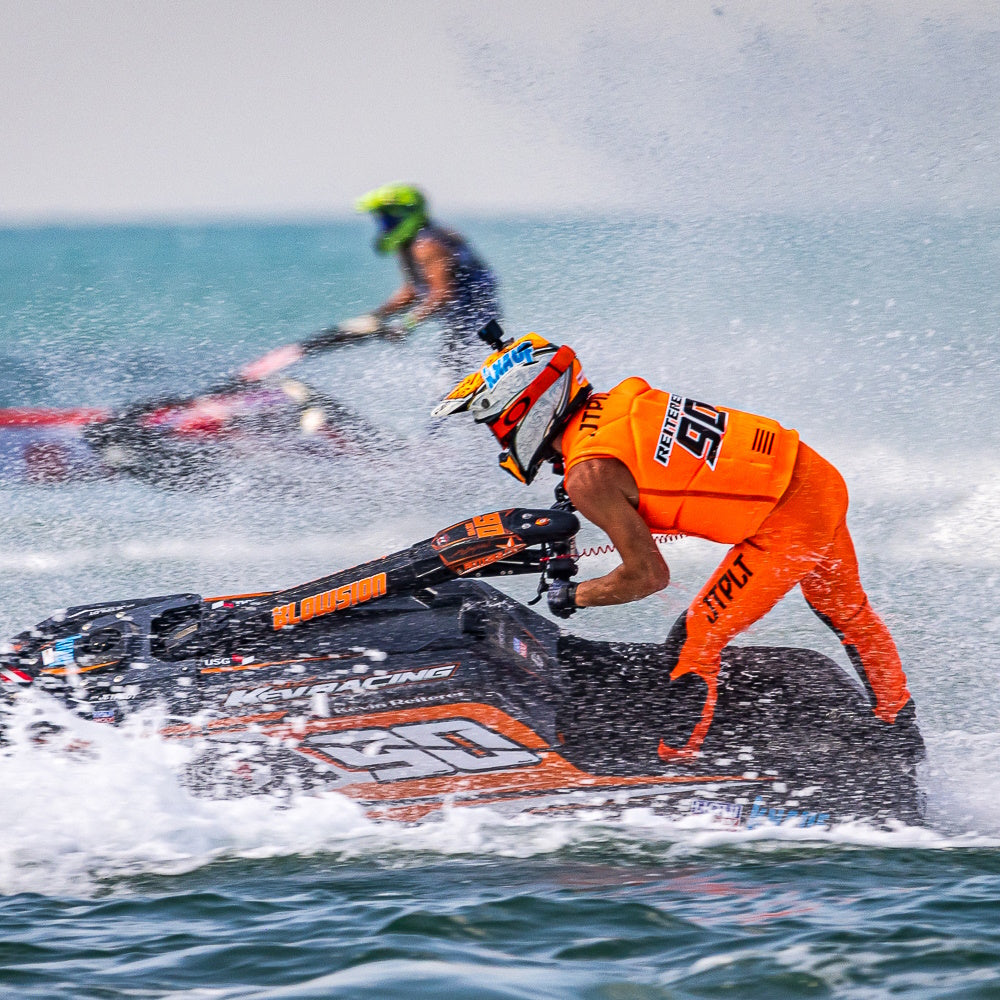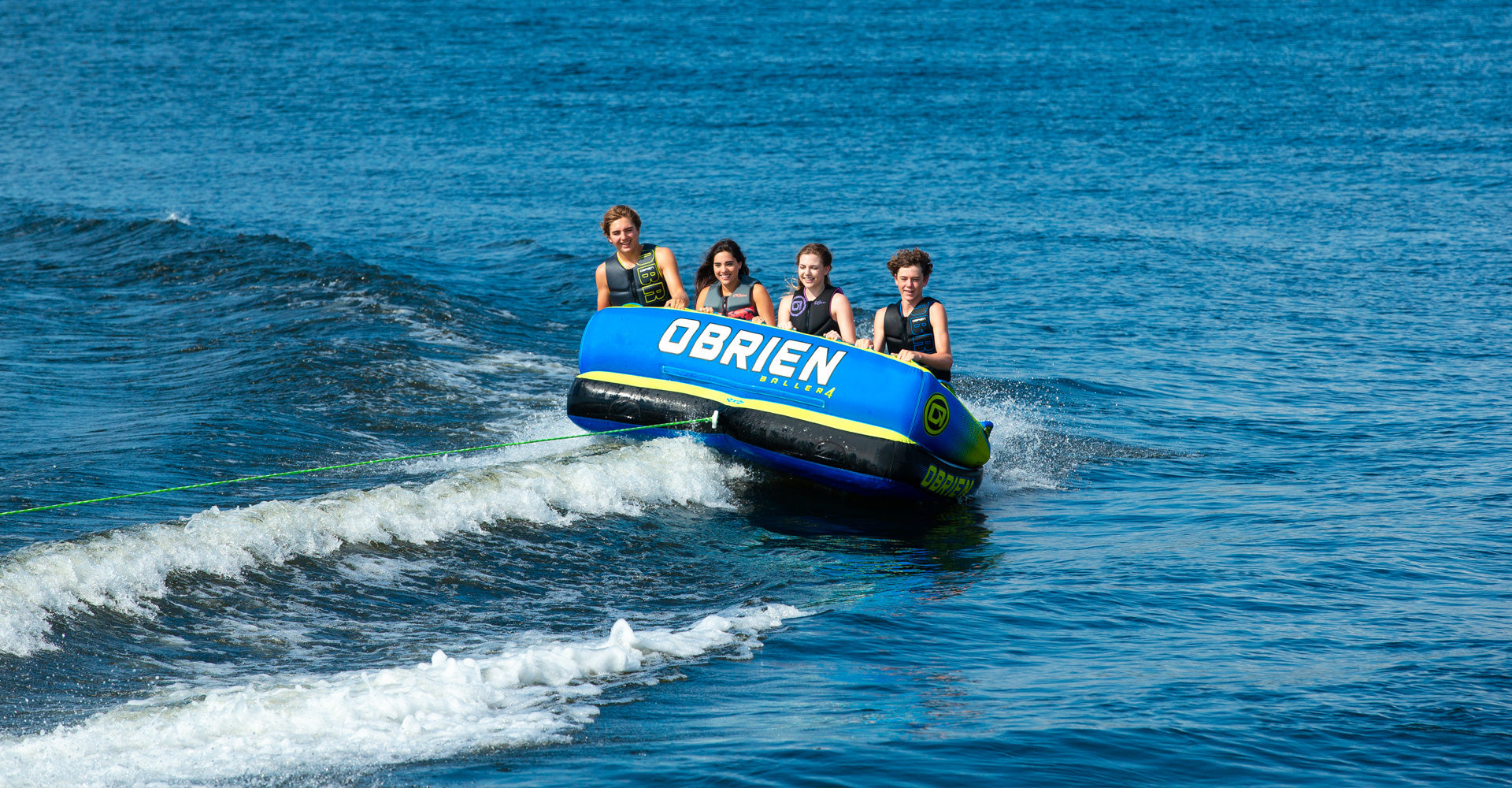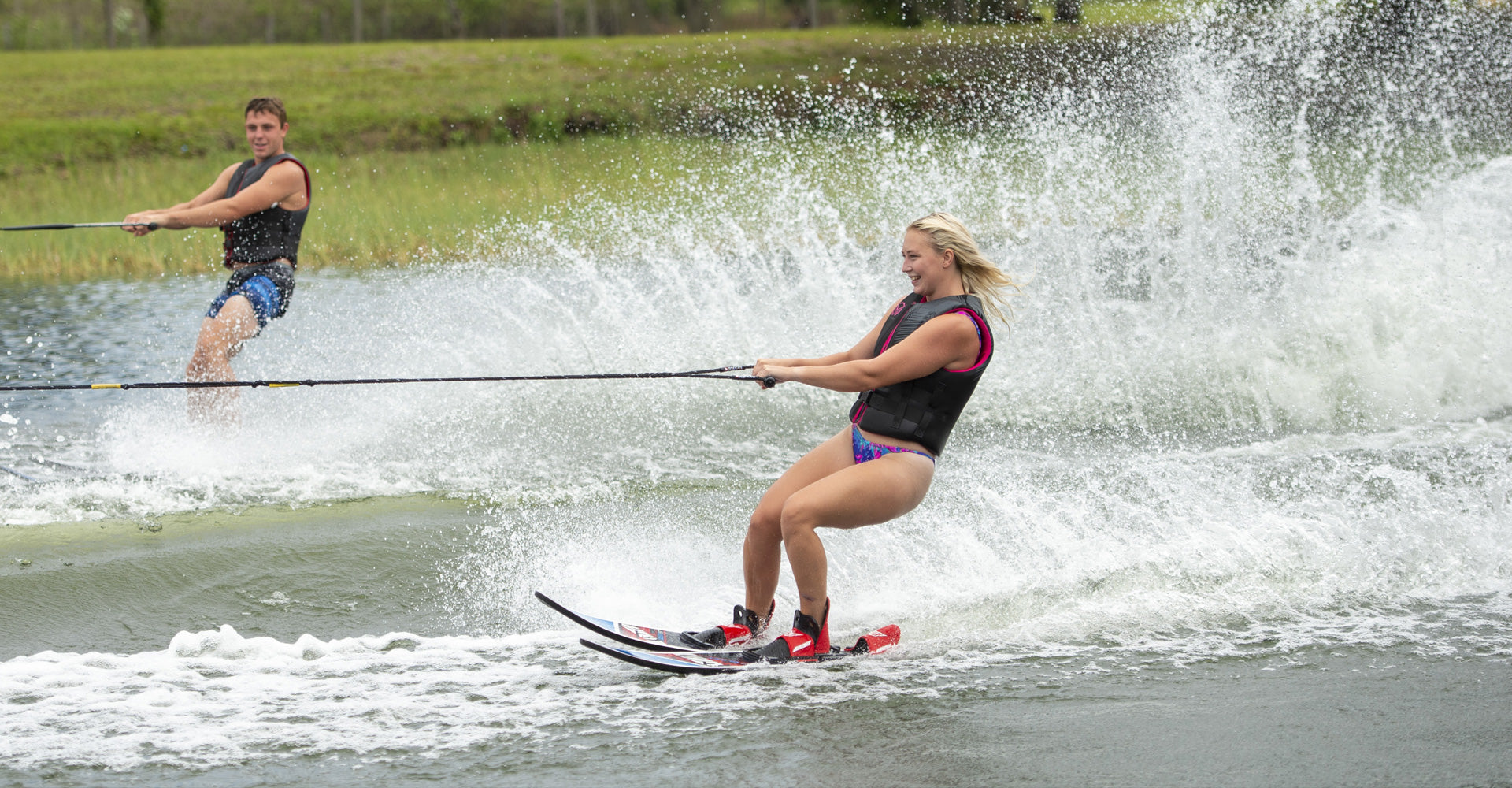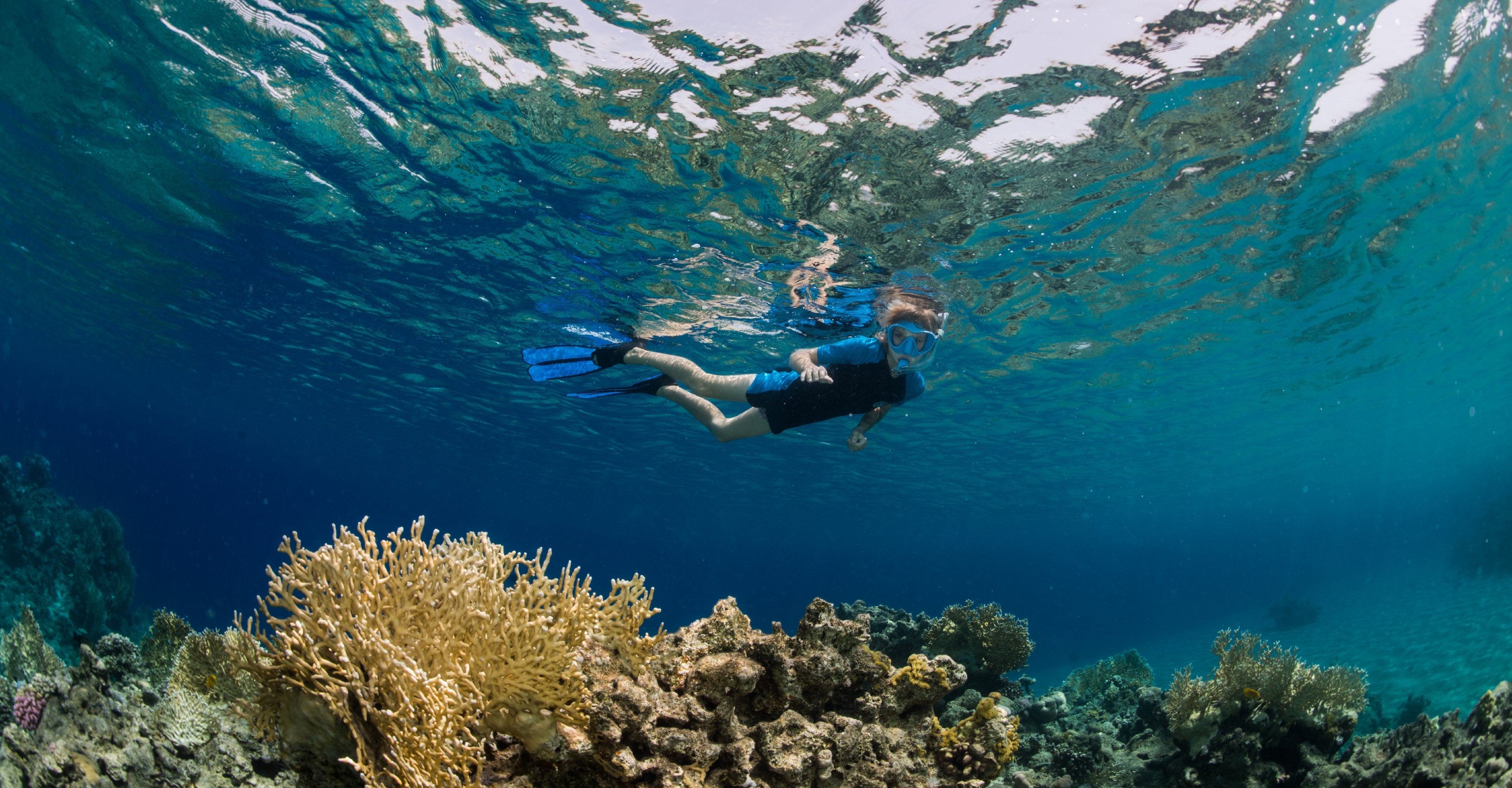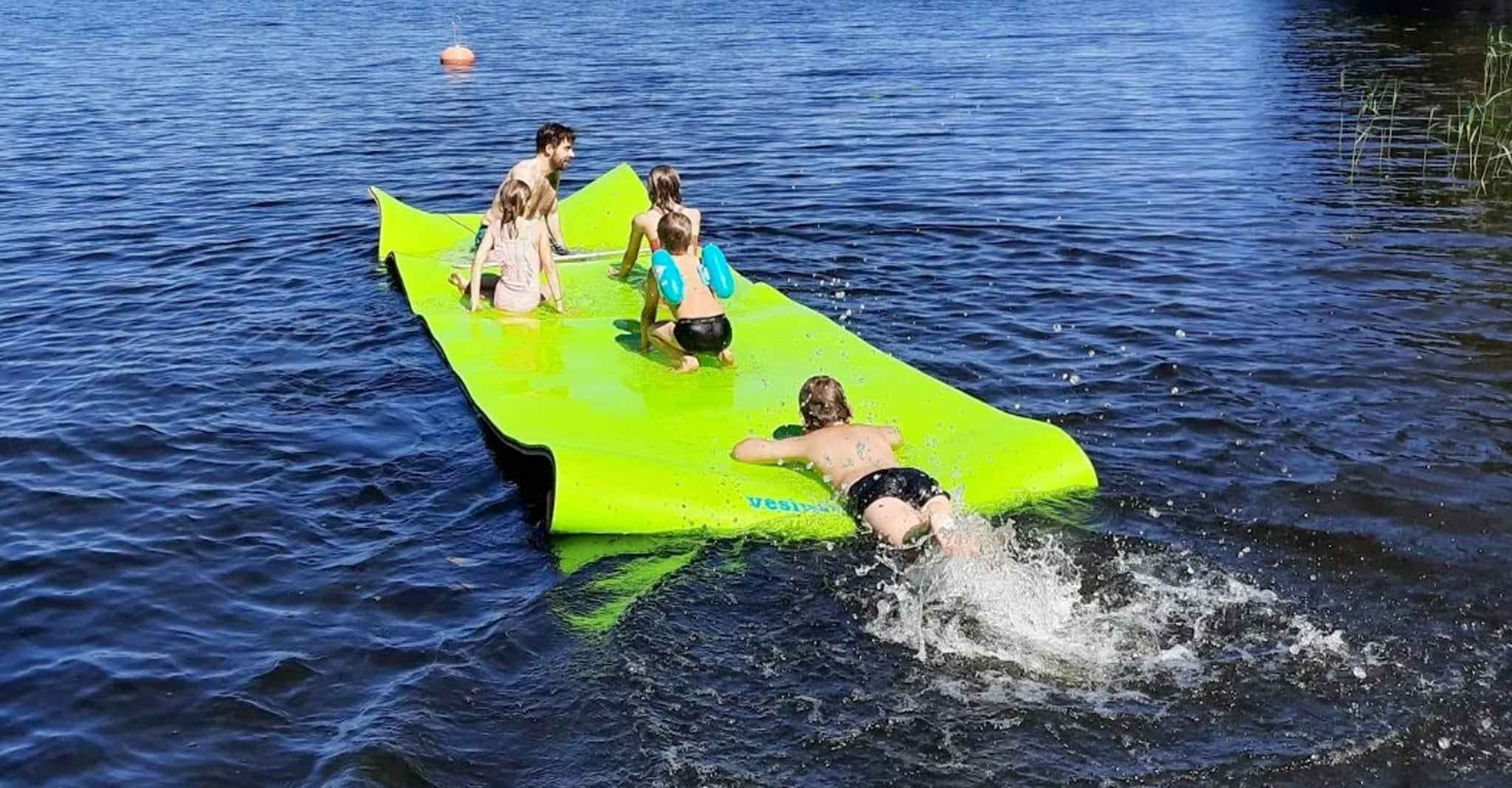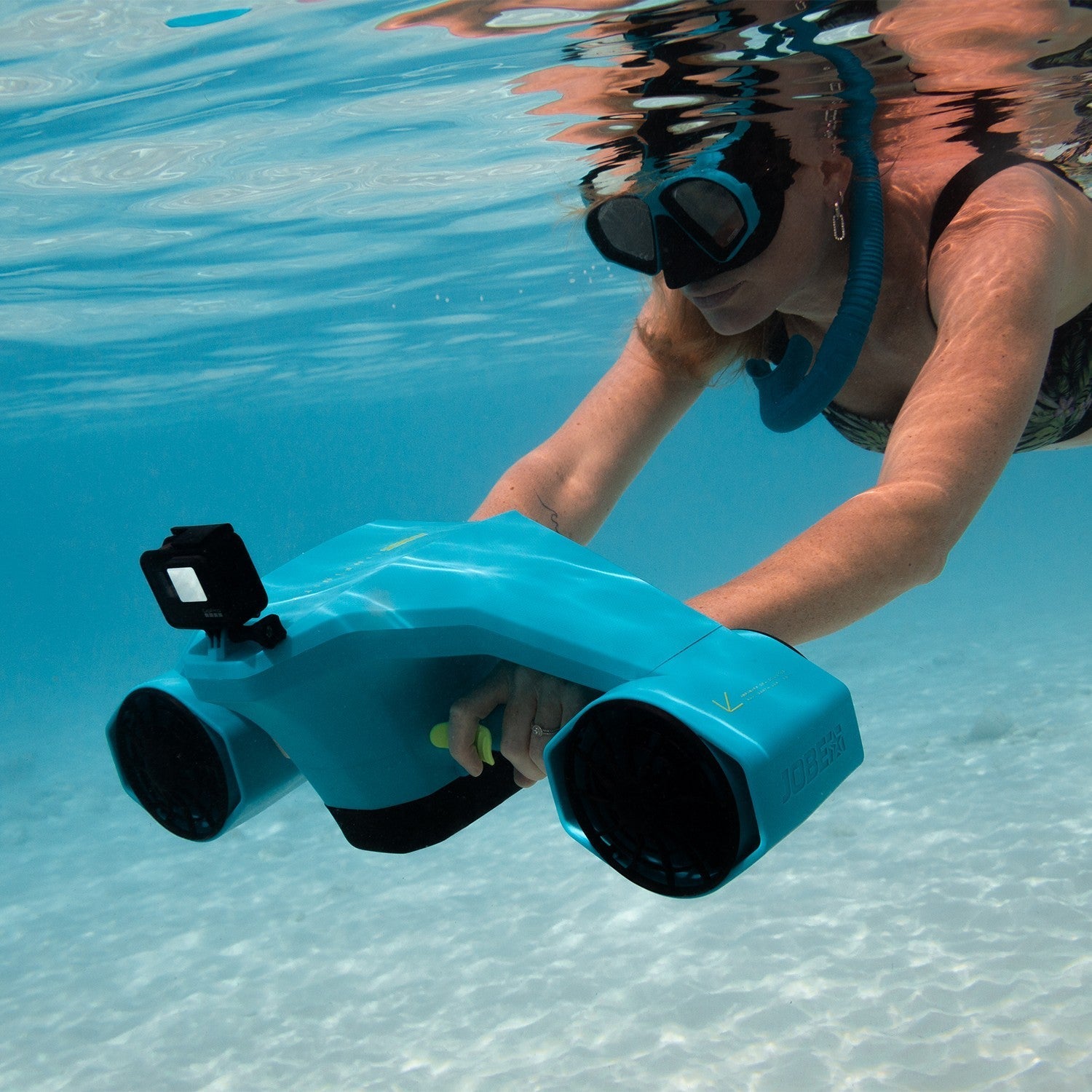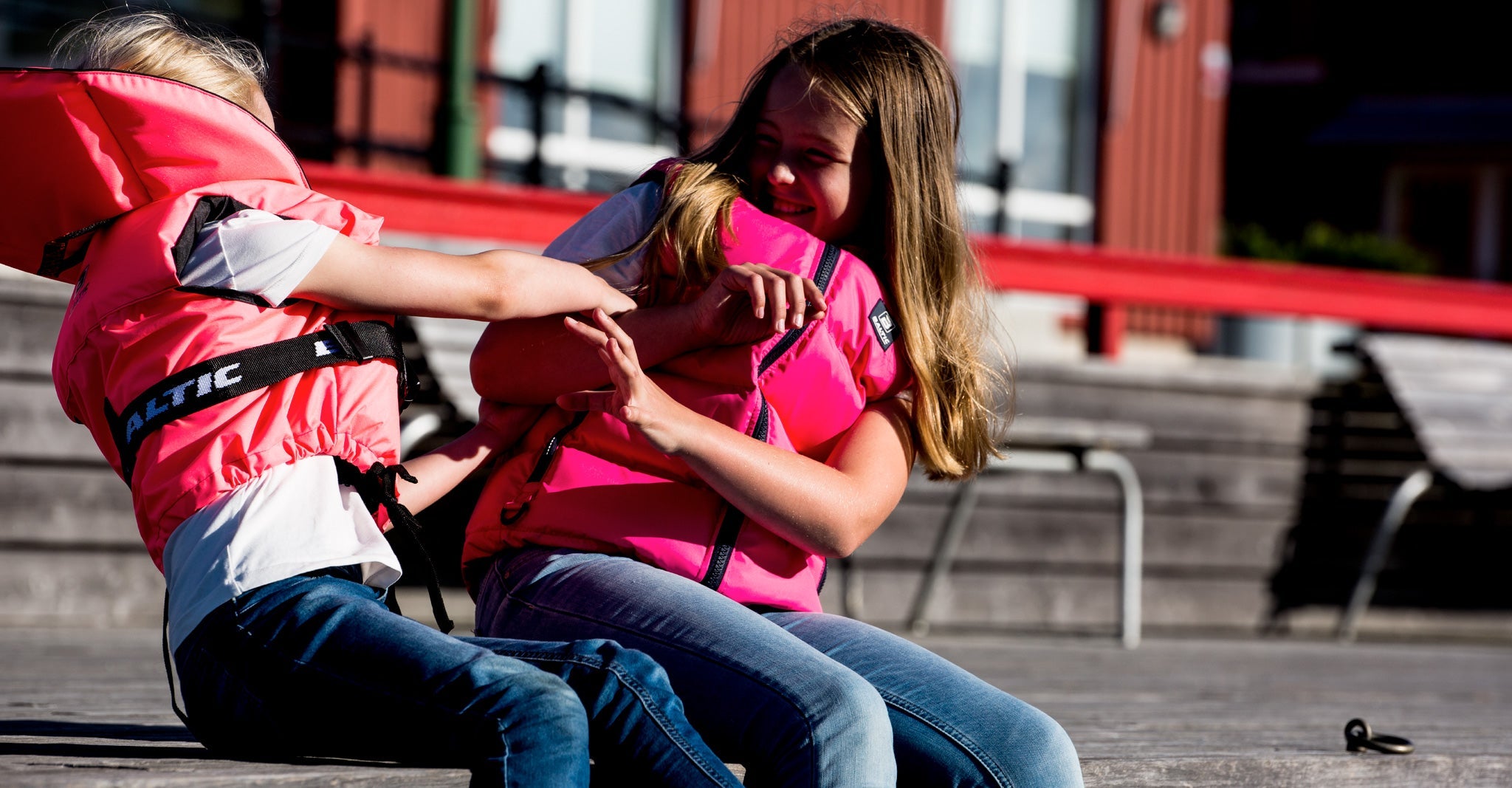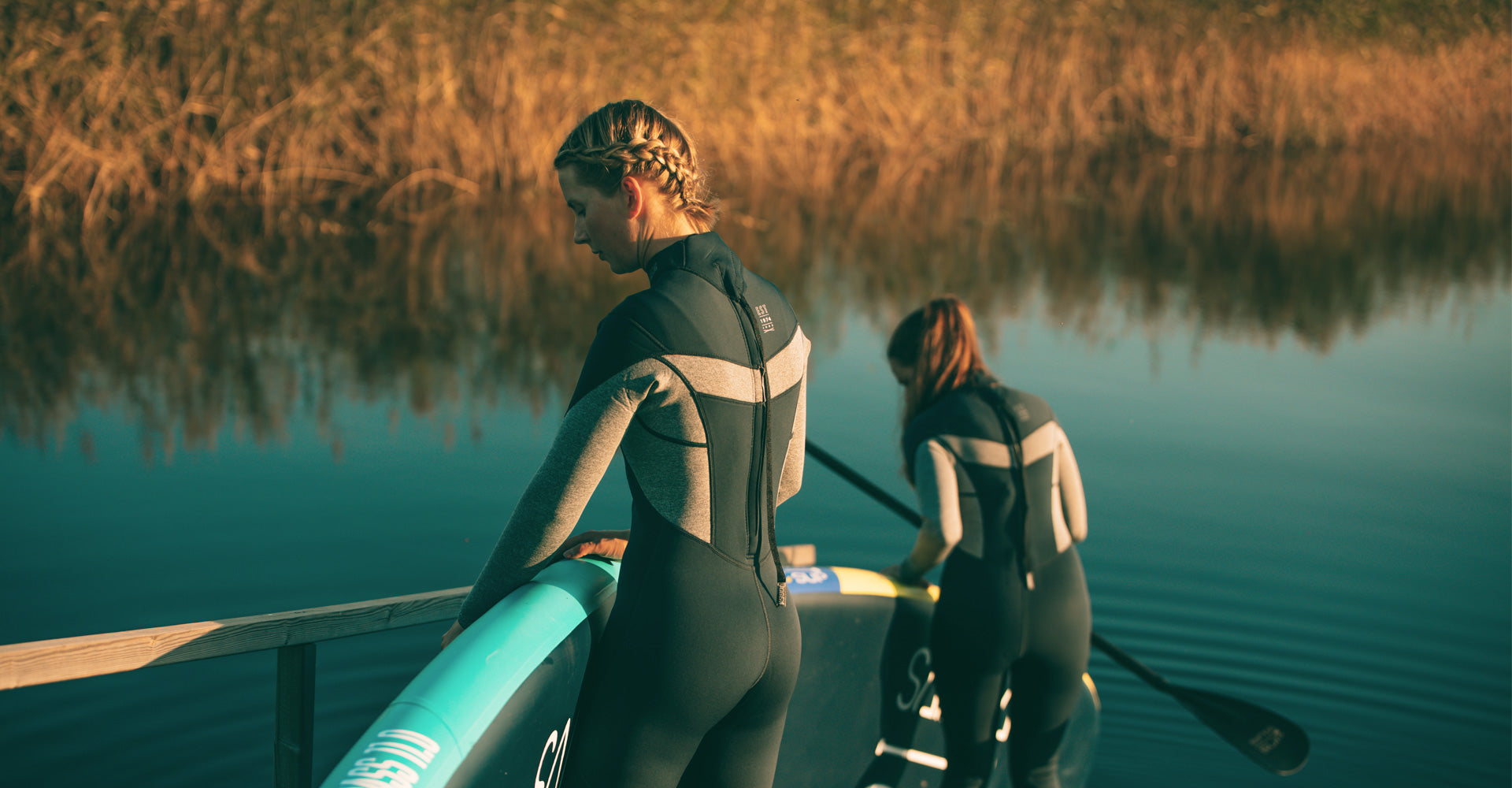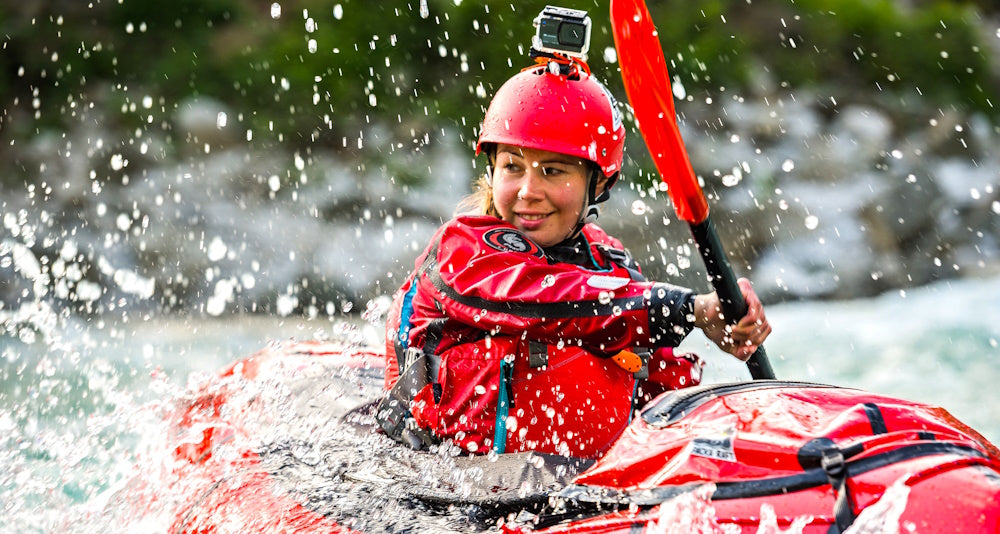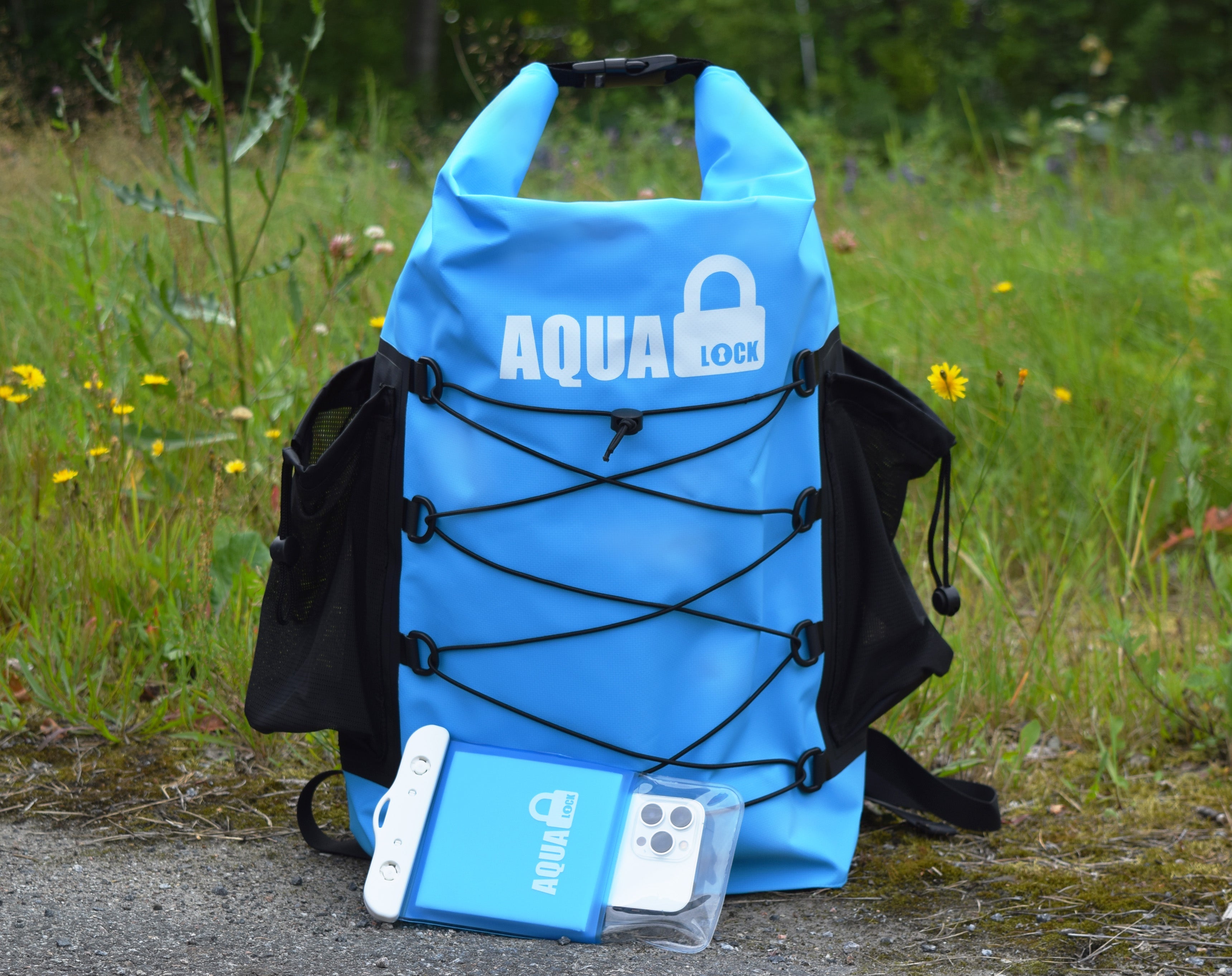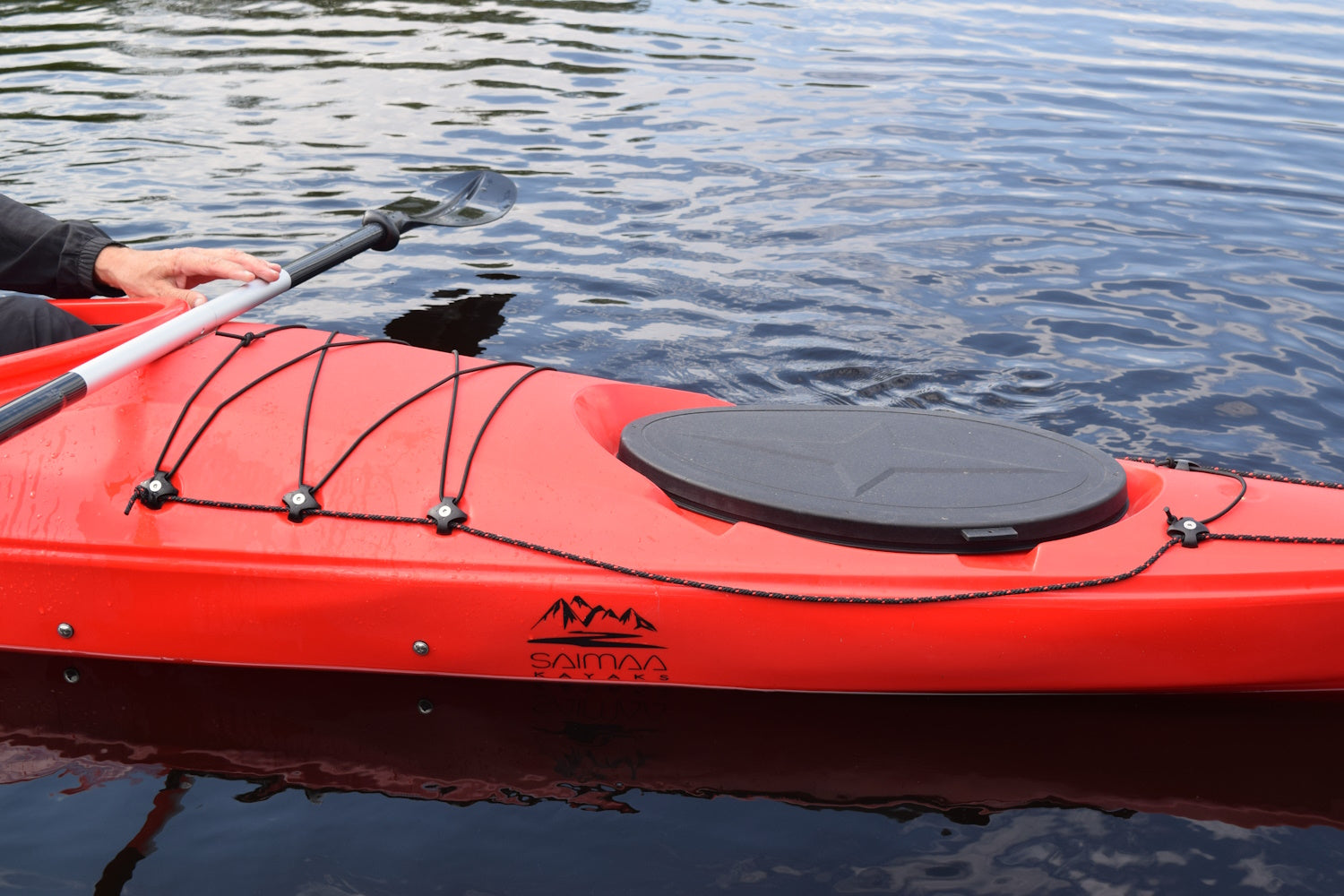Regular inspections, cleaning, maintenance, proper storage and transport will extend the life of your kayak or canoe.
Problem prevention
Keep an eye on your kayak - look and check for loose bolts and nuts, pay attention to the shape, finish and colour of your kayak hull and keep it clean.
After paddling in sea water, the kayak (just like any other watercraft) should be rinsed and cleaned thoroughly with fresh water. Metal parts, holes and cavities require careful handling as metal is susceptible to corrosion and cavities are easily missed due to their awkward location. The crystallisation of salt water accelerates the wear and tear of the kayak and materials will not last as long if not rinsed with fresh water. Also keep your kayak clean from dirt, if washing with water is not enough, you can use a mild detergent solution. Try it on a small area first if using a new detergent.
Metal parts are often made of stainless steel, but despite its name, it is not completely immune to corrosion, despite popular belief. The anti-rust properties of stainless steel are very tough and if combined with regular inspection and cleaning/rinsing, the end result is a material that will last for years in pristine condition.
The most common first scratch/wear points on a kayak are around the paddler's heels in the interior, and outside on the kayak hull on the tip side of the bottom. These should be inspected and felt at regular intervals to ensure that any scratches or wear are noticed in time to be repaired before they become too deep.
Storing the kayak
The kayak should be kept out of direct sunlight as much as possible and away from high local temperatures such as those of a barbecue or campfire.
UV radiation and heat can cause cosmetic damage like colour fading, or structural damage such as deformation of the hull.
Deformities can often be repaired but they take a little time and effort, and summer holidays or weekends are not the best time to spend on extra work when you could be spending it on paddling, camping and fishing, so it's worth storing your kayak properly!


When not in use, the kayak should be stored with the hatches open and the kayak on its side or upside down. When using stands or a rack to support the kayak, position the kayak so that the support is at the bulkheads of the kayak,so that the weight rests on the strongest points of the kayak. Cushion the racks well, for example with foam. Never store the kayak "right side up", i.e. bottom down, with racks or stands. Over time, the bottom of the kayak will become indented from the weight. We recommend side storage because the side of the kayak is the strongest part of the kayak.
The hatches and condensation vents should be opened to allow water that has entered the hatches or condensed inside the structure to escape. Always store the kayak above the ground on a rack or stand and not close to the ground or on the ground, as moisture and cold from the ground will wear the kayak out. It is also easier to keep the kayak dry and clean when it is not directly touching the ground.
Transporting the kayak
When transporting a kayak, care should be taken to ensure that the load is tied firmly but not too tightly. Overly tight straps will put unnatural pressure on the hull, which may result in damage or warping, especially if the kayak is tied up for a long time and the air temperature is high. The vibration caused by transporting the kayak also easily loosens screws and nuts, so it is a good idea to go through these one by one after transporting the kayak.
Fishing kayaks have a considerable number of different parts and pieces that should be removed from the kayak during transport. Paddle/rod holders, seats, rail attachment pieces and other more delicate parts should be removed from the kayak or double-secured during transport so that they do not get lost and cause a dangerous situation during the trip.
The kayak can be transported in different positions depending on its model, construction and the specific transport possibilities of the product.
The best transport position for a kayak is in a padded J-frame on its side, as the kayak's side is its strongest point - we recommend this transport position whenever possible and especially in hot weather, as PE plastic bends more easily in hot conditions. If you use other transport positions, remember to use use the cushioning on the roof racks to avoid excessive point loads.
When transporting a longer kayak in windy conditions, on long journeys or on long roads, we recommend that you also use a front and rear strap. Also remember to frontal and rear exceeding with a red flag and/or light if you are driving in the dark.
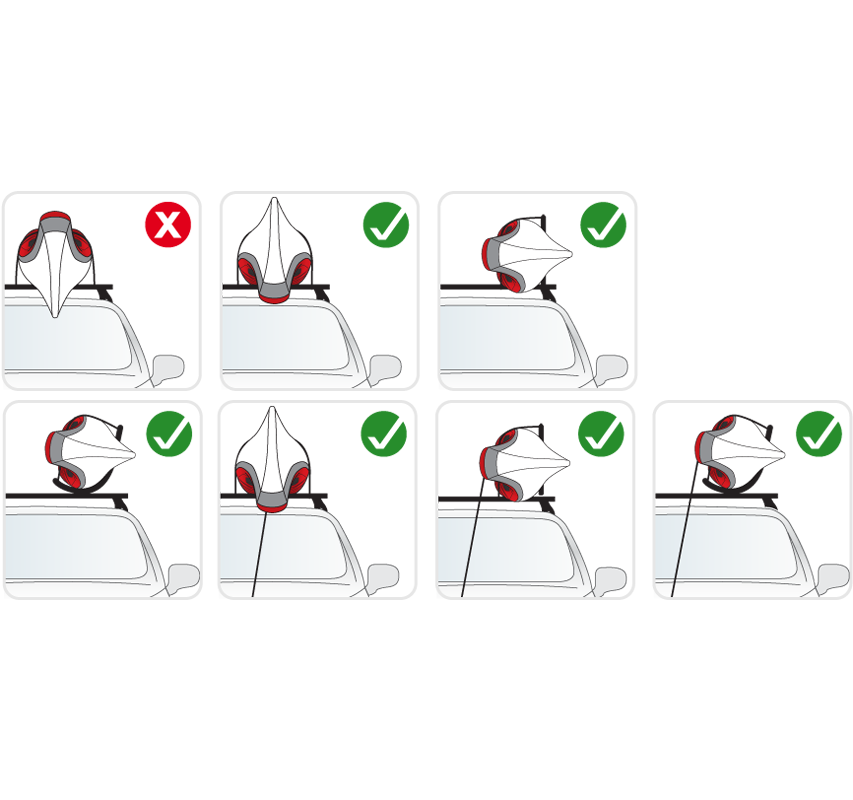
Handling the kayak
Kayaks should never be dragged. Ask a friend to help you lift it whenever possible, and when travelling alone, use a kayak trolley. You can also lift the kayak gently onto your shoulder if its weight and shape allow.
When using a flat-profile kayak trolley, place the trolley on the bulkhead, and when using a V-profile trolley, place the rack where the kayak will fit tightly. Do not pull the kayak behind you at high speeds, especially if the terrain is bumpy or uneven so that the kayak does not tip over.
When landing ashore, drive the bow of the kayak just barely to dry land and take the kayak to shore using the methods above. So, when going ashore, do not drag the kayak behind you to avoid scraping it onto rocks and the bottom.
By following these steps, you will minimize the risk of unnecessary wear and tear on your kayak, as well as breakage, and extend the life of your kayak.
Kayak maintenance
Keep your kayak clean with water or a mild detergent solution. If you are using a new detergent, try it on a small area first. Check moving parts, integrity of the ropes and straps, and replace worn parts if necessary. If you use a pedal kayak, lubricate the pedal bearings and moving parts.
With polyethylene kayaks, you may sometimes encounter a problem where the kayak has become inexplicably indented or warped during storage or transport, for example. This is called "oil canning" and can be caused by high temperatures, poor storage or poor/too tight tying during transport, among other things.
If the kayak has been stored over the winter in a rack, for example, with the kayaks weight not supported upside down at the bulkheads or on its side, but "right side up", i.e. bottom down, this can over time cause indentations in the bottom of the kayak at the racks.
These indentations or "oil canning" can usually be dealt with even without any tools. Polyethylene always wants to return to the shape it was moulded into in the manufacturing process. By heating the material, you can speed up this process, meaning that often all you have to do is put the kayak in the sun for a few hours and the hull will straighten out. If the indentations are more resistant, you can also heat the problem area with a hair dryer, for example, while pressing it back into shape with your hands or using a support to straighten the indentation.


